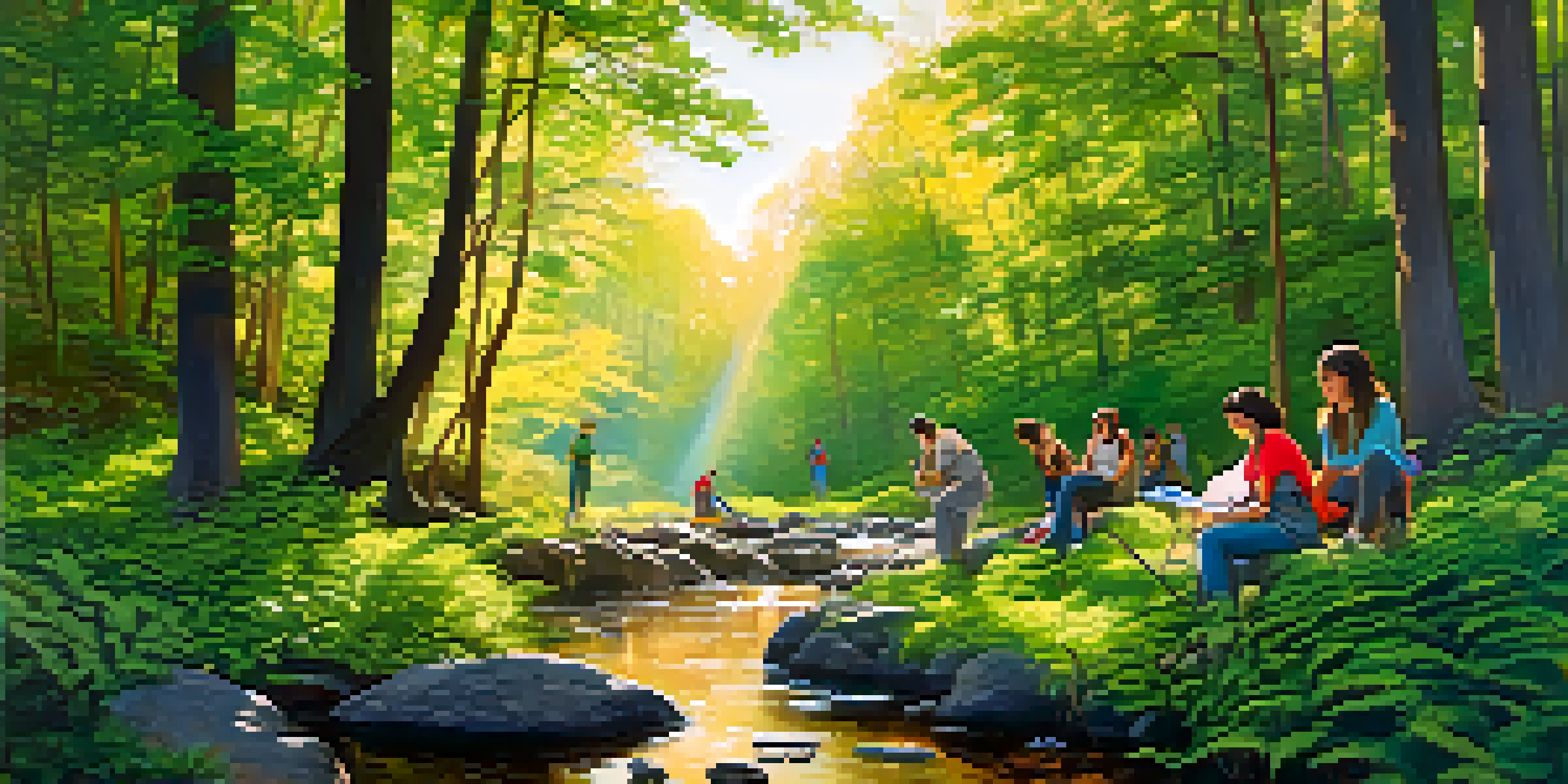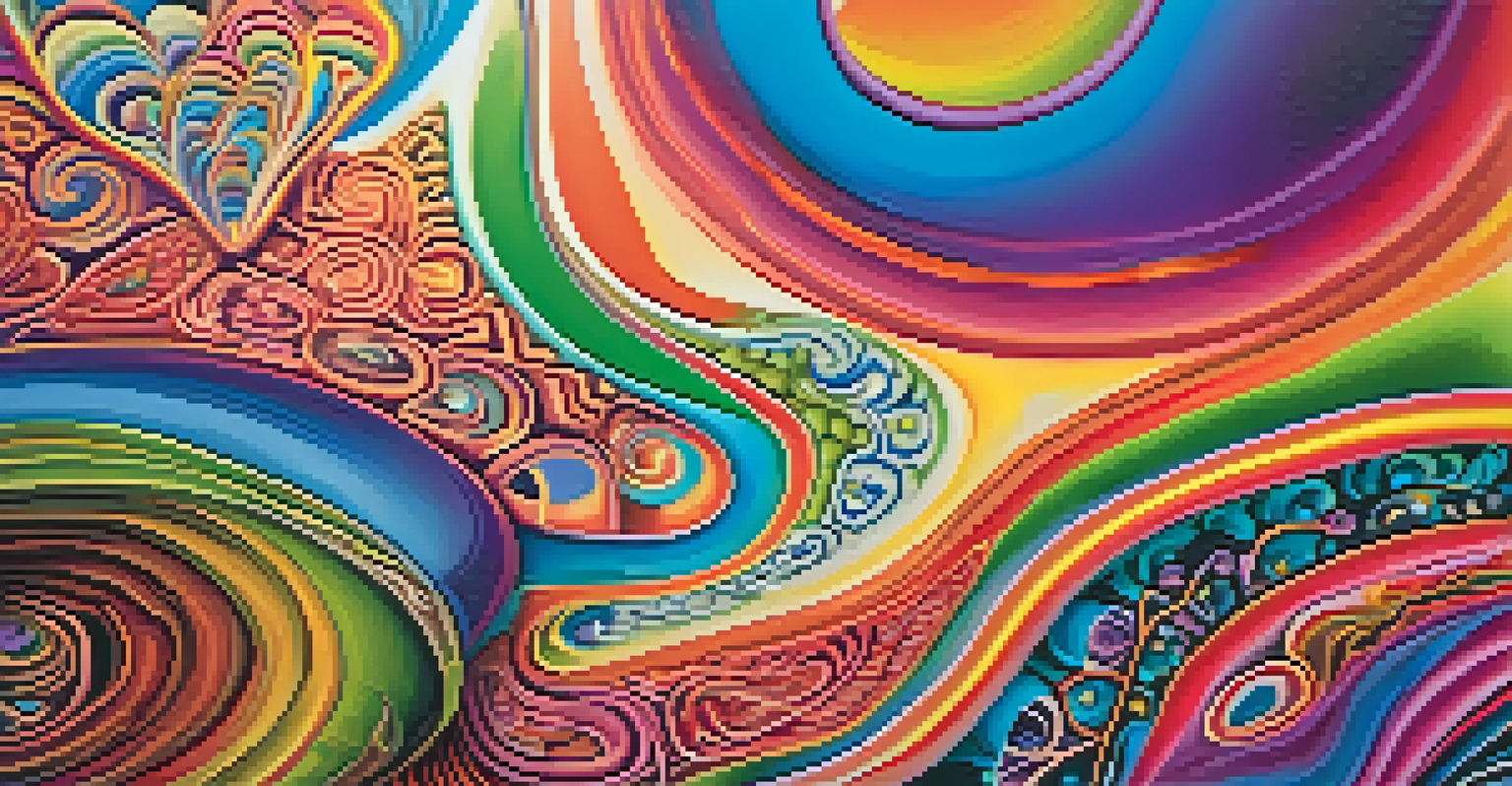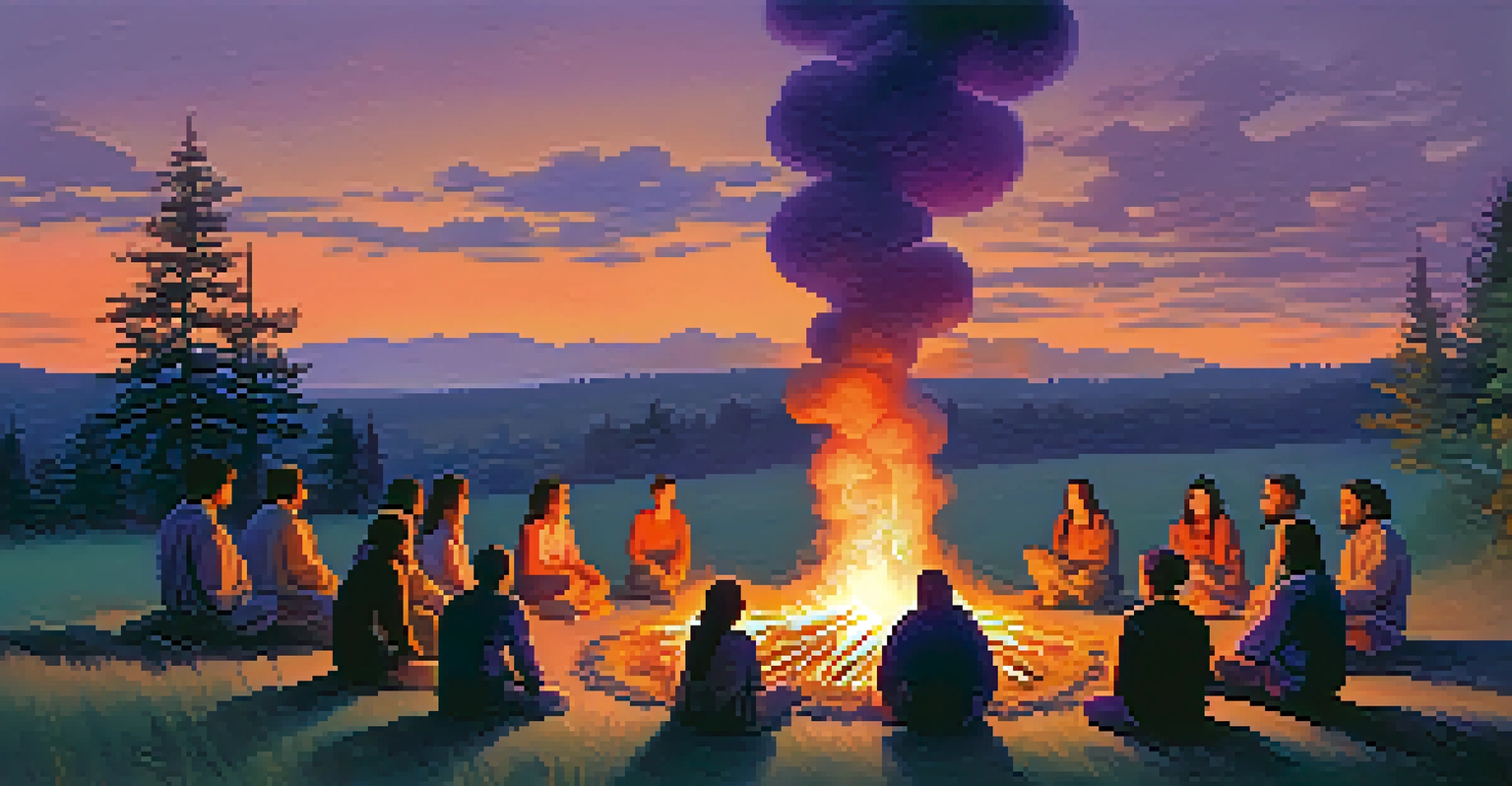Mind Expansion: The Intersection of Entheogens and Art

Understanding Entheogens: A Brief Overview
Entheogens are substances that are often used in spiritual or religious contexts to expand consciousness. These natural compounds, such as psilocybin mushrooms and ayahuasca, have been revered for centuries across various cultures. They are believed to facilitate deep introspection and connection to a greater reality, often leading to transformative experiences.
Psychedelics can help us transcend our ordinary perception and connect with a deeper reality.
While mainstream society has only recently begun to explore their potential, these substances have a rich history intertwined with art and creativity. Artists, musicians, and writers have long turned to entheogens to enhance their creative processes. By tapping into altered states of consciousness, they can access new ideas and perspectives that might otherwise remain hidden.
Related Resource
Understanding the role of entheogens in creativity opens a fascinating dialogue about the nature of inspiration itself. What does it mean to be inspired? How do our perceptions shape the art we create? By examining these questions, we can appreciate the profound influence of entheogens on artistic expression.
The Historical Connection Between Art and Entheogens
Throughout history, many cultures have used entheogens as catalysts for artistic expression. For instance, ancient Greeks incorporated the hallucinogenic properties of kykeon, a ritual drink, into their art and philosophy. Similarly, indigenous tribes in the Amazon have used ayahuasca to inspire their vibrant textiles and storytelling traditions.

These connections highlight a long-standing relationship between altered states of consciousness and creative output. When artists engage with entheogens, they often report experiencing enhanced perceptions and vivid imagery that inform their work. This melding of the mystical and the artistic has given rise to countless masterpieces across various mediums.
Entheogens Enhance Creativity
Entheogens facilitate heightened awareness and emotional release, allowing artists to break through mental barriers and access new ideas.
By exploring these historical precedents, we can better understand how entheogens have shaped artistic movements throughout time. From surrealism to psychedelic rock, these influences continue to resonate in contemporary art, prompting us to reconsider the boundaries of creativity.
How Entheogens Influence the Creative Process
The creative process can often feel elusive, but many artists claim that entheogens help them break through mental barriers. These substances can induce states of heightened awareness and emotional release, allowing for a more fluid flow of ideas. As a result, artists may find themselves more open to experimentation and innovation.
Creativity is the way I share my soul with the world.
Moreover, entheogens can enhance sensory experiences, leading to a more profound appreciation of color, sound, and texture. This heightened perception can transform the way artists interpret their surroundings, infusing their work with a unique vibrancy. For example, musicians might find new rhythms, while painters might experiment with bold colors and forms.
Related Resource
Ultimately, the influence of entheogens on creativity underscores the importance of exploration in the artistic journey. By embracing new experiences, artists can transcend conventional boundaries and unlock the full potential of their creativity.
Modern Artists and Their Entheogenic Inspirations
Today, many contemporary artists openly discuss their experiences with entheogens and how these influence their work. For instance, visual artists like Alex Grey utilize psychedelics to inform their intricate and spiritual art. His pieces often reflect the interconnectedness of the universe, inspired by his own entheogenic experiences.
Similarly, musicians such as Tame Impala's Kevin Parker have acknowledged how psychedelics shape their sound and lyrical themes. The blending of genres and innovative production techniques can often be traced back to these altered states of consciousness. This showcases how entheogens continue to fuel creative expression in the modern era.
Historical Ties to Artistic Expression
Many cultures have historically used entheogens as catalysts for creativity, influencing various art forms from ancient times to modern movements.
These artists remind us that the intersection of entheogens and art is not merely a historical curiosity but an ongoing dialogue. As more creators explore these substances, the artistic landscape continues to evolve, inviting audiences to engage with new and transformative ideas.
The Role of Community in Artistic Exploration
The communal aspect of using entheogens can significantly enhance the artistic experience. Many cultures have rituals that involve group consumption of these substances, fostering deep connections between participants. This shared journey can lead to collaborative artworks that reflect collective insights and emotions.
Artistic communities that embrace entheogenic practices often create safe spaces for experimentation and dialogue. Here, artists can share their experiences and inspire one another, leading to a flourishing of creativity. The supportive environment encourages risk-taking, pushing the boundaries of conventional art forms.
Related Resource
Ultimately, the synergy between community and entheogens enriches the artistic process. By embracing collaboration and shared experiences, artists can tap into a wellspring of creativity that transcends individual expression.
Navigating the Ethical Considerations of Entheogen Use
As the interest in entheogens in art grows, it's crucial to address the ethical considerations surrounding their use. Questions arise about cultural appropriation, especially when Western artists draw from indigenous practices without proper understanding or respect. Acknowledging the roots of these substances and their cultural significance is essential in fostering responsible use.
Additionally, the influence of entheogens on mental health must be considered. While many report positive experiences, these substances can also trigger anxiety or discomfort in others. It’s important for artists to approach their use thoughtfully, ensuring they are in a safe and supportive environment.
Ethical Use in Artistic Communities
As interest in entheogens grows, it is essential for artists to navigate ethical considerations, such as cultural appropriation and mental health impacts.
Navigating these ethical considerations not only enriches the conversation around entheogens but also elevates the artistic community. Artists can engage in meaningful discussions about respect, responsibility, and the deeper implications of their creative processes.
The Future of Entheogens in Artistic Expression
Looking ahead, the future of entheogens in art appears promising as societal attitudes continue to shift. With growing interest in mental health and mindfulness, more artists may explore these substances as tools for self-discovery and creative expression. This evolution could lead to innovative art forms that resonate with contemporary audiences.
Moreover, as research into the therapeutic benefits of entheogens expands, we may see deeper integration into artistic practice. Workshops and retreats focused on creativity and entheogen use could emerge, giving artists safe spaces to explore their creativity. This could foster new artistic movements that challenge the status quo.

Ultimately, the future of entheogens in art is ripe with potential. As artists continue to experiment and redefine the boundaries of creativity, we can expect to witness a vibrant fusion of spirituality, consciousness, and artistic expression.